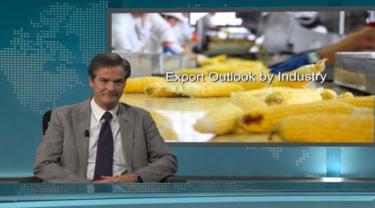This is big. In fact, of all the issues I have covered in the past 10 years – and I have covered a lot of issues – this could be the biggest. And it should come as no surprise that it’s about China. Just when you might have thought that we exhausted the last known superlative to describe a China issue, here’s another. It concerns the 1.3 billion mouths the economy has to feed. Here’s the news: their collective appetite is growing. And keeping that hunger satisfied is going to be one of the greatest challenges, not just for China, but for the world economy, in the coming decades. So, does Canada have a role to play?
First, a few details of the story. The current driver of additional food demand in China is rising wealth. McKinsey estimates that by 2022, just over three-quarters of China’s urban population will have ascended into the middle class, with a comfortable majority being in the upper end of that group. Other estimates put annual growth of the middle class at close to Canadian population. That is staggering. Studies also show that one of the top categories that these neo-wealthy consumers throw more money at is food. What’s even more interesting is that they are very keen on imported food. Trust is a problem in China’s food supply chain. But if product is coming from someplace abroad where food governance is better – like Canada – the interest goes way up.
If so, does Canada have a piece of the action? To say ‘yes’ is a gross understatement. Back in 2000, Canadian food shipments to China were just 3 per cent of our total food exports, a distant third behind Japan. Since then, China’s share has lurched to 11 per cent, vaulting past Japan to take a commanding lead of second place. For the last 16 years, growth in our food exports to China has averaged over 15 per cent annually, triple the rate of growth to the US. Better still, the number is accelerating. Since 2008, yearly growth has averaged 18 per cent, while the US number hasn’t changed. One more fact: since 2000, China has accounted for 17 per cent of the total growth of our food exports abroad. But in the past 8 years, it has risen to over one-quarter of total growth. No country other than the US even comes close. Keep this up and China knocks the US out of top spot in 2033.
What are we shipping to China? The categories are lopsided. The vast bulk of our China-bound agri-food exports (74 per cent) are raw and processed grains and oilseeds, with growth numbers much like the overall stats. If that’s not exactly inspiring, then consider this: rising wealth should mean that higher value-added products are the new up-and-comers. Any hints of that in the data? Check out meat products, number two on the list. They are above average, up 17 per cent annually. But this is changing: in the last 8 years, that number has zoomed up to 27 per cent, lifting its export share to 13 per cent of the total.
Just behind this are fish and fish products. Raw product is where the growth is, with salt water fish up by 24 per cent annually, and aquaculture, still in export infancy, up explosively. Prepared products are rising by double-digits, but below the overall average. That’s not likely to be the case for too long. Well, there are other, much smaller, categories that are also racking up very impressive growth. If that continues, they will also become part of a sector that is only likely to be more dynamic as time rolls on.
How do we know that? The Food and Agriculture Organization estimates that China’s food needs will outstrip its production in certain key food categories, notably pork. The implied growth rates for imports are arresting: double-digits annually through 2030 and beyond. That’s what you get just for showing up; the sky’s the limit if you increase market share!
What’s inspiring about this story is that in many ways, Canada has only just begun. Our foray into China’s food chain is still fairly concentrated, and there’s lots of capacity to up our game. Getting the business requires products appropriate to the market, and high quality standards. Keeping the business requires reliability – which likely means considerable investment.
The bottom line?
When it comes to future agri-food sales to China, Canada has a lot going for it. We have the resource. We have the know-how. We have the supporting infrastructure. And this is one of those rare industries in which we actually have the scale to meet China-sized needs. All of these attributes stay parked on the shelf without bold vision. Are we up to it?





